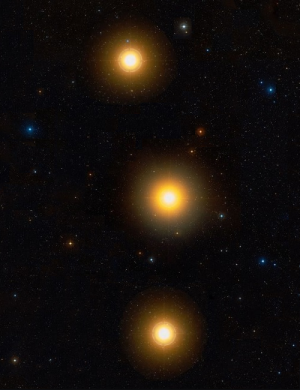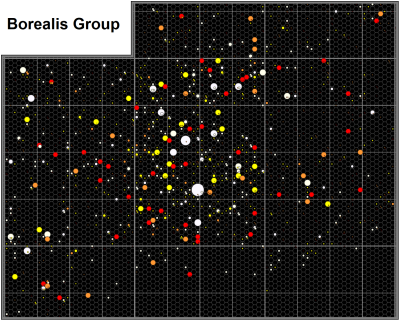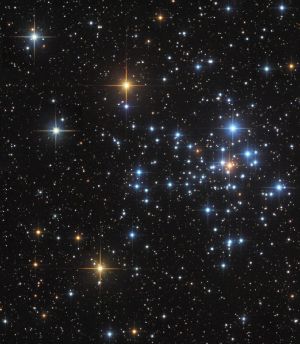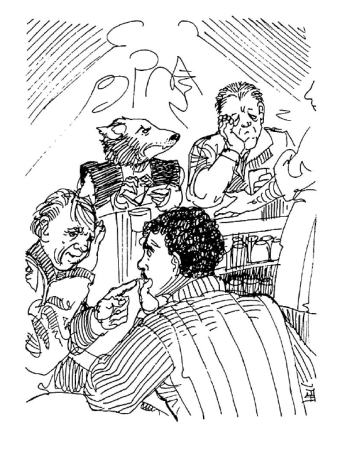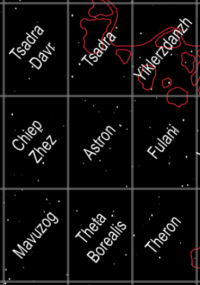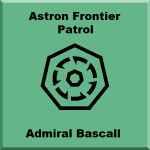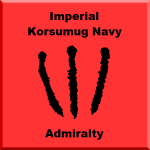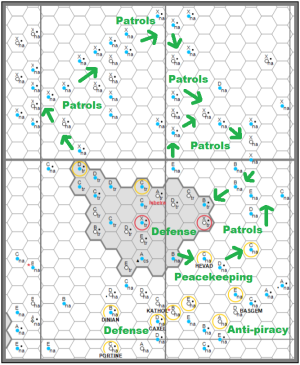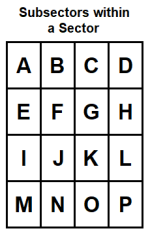Astron Sector
| Astron Sector | |||||||||||||||||
|---|---|---|---|---|---|---|---|---|---|---|---|---|---|---|---|---|---|
| |||||||||||||||||
| Subsectors | |||||||||||||||||
|
| |||||||||||||||||
| Sector Data | |||||||||||||||||
| No. of Worlds | 269 | ||||||||||||||||
| Population | 3,784 million | ||||||||||||||||
| Majority Control | Non-aligned, Unclaimed (NaXX) - 91.8% | ||||||||||||||||
| Secondary Control | Haddox Association (HaAs) - 4.4% | ||||||||||||||||
| Tertiary Control | Non-aligned, Sophont (NaSo) - 3.4% | ||||||||||||||||
| Quaternary Control | Non-aligned, Human (HaHu) - 0.4% | ||||||||||||||||
| Capital | Haddox | ||||||||||||||||
| Imperial Coordinate | -8 / 0 | ||||||||||||||||
| This sector has a trade map | |||||||||||||||||
| This sector has economic data | |||||||||||||||||
| This sector has sector data | |||||||||||||||||
| This sector has a climate file | |||||||||||||||||
| This sector has sector data | |||||||||||||||||
|
Astron style="width: 250px; height: 350px; border: solid 1px black; float: right; clear: left" | |||||||||||||||||
Astron Sector lies rimward of the Zhodani Consulate, on the very spinward edge of explored space.
- It is part of Charted Space.
- The Zhodani know it as Shiants Sector.
- It is a frontier area with little development and few settled systems.
Description (Specifications)
Astron Sector is a largely unpopulated wilderness lying on the far spinward edge of Charted Space.
- The resources of the sector are for the most part untapped.
The sector was initially surveyed during the Imperial First Survey.
- First Survey primary data regarding the sector was very fragmented.
- The data drew heavily on the records and accounts of previous explorers within the region.
The sector was extensively surveyed during the Imperial Second Survey.
- A few IISS personnel based at Pautho, in Theta Borealis Sector, were able to personally gather limited amounts of data at great personal risk.
We salute their valor and honor the fallen. - Much of the updated data relating to the sector was based on remote long-term observations done over approximately 70 years (from 995 to 1065).
- Most of the output from these observations was automatically collated and generated and may occasionally contain errors.
Astrographic Features & Trade Routes
The following astrographic and commercial data regarding the sector has been determined:
Summary
- Stellar Distribution
- Three Sisters
- Borealis Group
- Rifts and Voids
- Clusters and Traces
- Mains
Stellar Distribution
A basic map showing the distribution and size of stars within Astron Sector.
- The color corresponds to the visible color of the star, which links to its spectral classification.
- The size as shown indicates both the physical size of the object and its relative brightness.
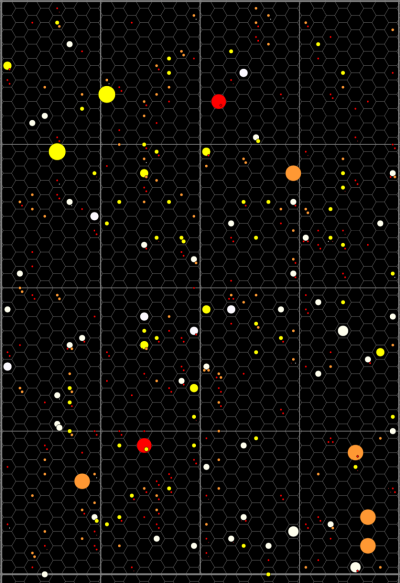
(Chart sourced from Traveller Map).
Note that the stars as depicted are representative. Any star, no matter what its size, is a mere speck within the hex it occupies.
- Ordinary main sequence stars can barely be seen from even a hex away.
- Huge, intensely luminous giant stars can be seen from across the sector and far beyond.
Rifts & Voids
Large rift areas are very much characteristic of Astron Sector, running generally from the spinward-coreward corner of the sector towards rimward-trailing, and dividing it into a scattered coreward expanse of voids and systems, a narrow central "waist" of worlds hemmed in by rifts, and a broad open rimward edge.
A simple chart showing rift regions within Astron Sector.
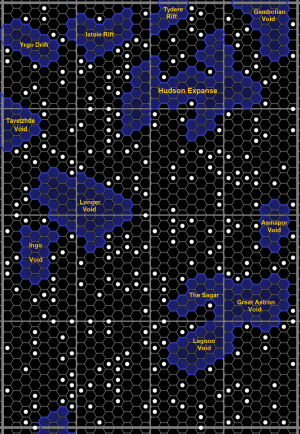
(Chart sourced from Traveller Map).
These scattered rift regions are considered to be part of the Idella Rift.
The various rift regions within the sector have been named.
- The Astron Voids dominate the rimward-trailing quadrant of the sector.
- The Hudson Expanse lies within the coreward-trailing quadrant of the sector.
- The worlds that surround it are known as the Outer Loop.
- The Longer Void is located within the central-spinward region of the sector.
- The coreward end of the Thetan Rift lies just within the sector.
The highest tech level commonly encountered out this Far Along (spinward of the Third Imperium) is TL–12, though a few worlds may be more advanced.
- This level of technology allows the routine use of up to Jump-3 drives.
- Locally, areas that cannot be routinely crossed by Jump-3-capable vessels are denoted as rift regions.
Three Sisters
The Three Sisters are a group of distinctive orange giant stars that can be seen across the sector.
- They lie along the trailing edge of Fundibul Subsector, marking the rimward-trailing corner of the sector.
- These three stars have become the most commonly accepted symbol of the sector.
- They are a part of the larger Borealis Group.
Borealis Group
The rimward skies of Astron Sector are dominated by the Borealis Group, a very large cluster of stars containing an unusually high number of giant stars.
- It primarily lies within Theta Borealis Sector.
- It is an astrographic feature visible across the whole of Charted Space.
- It is centered on the supergiant star Theta Borealis.
The skies within the region are spectacular. Some of the brighter stars can be seen from the surfaces of worlds during daylight hours.
Significant Stars
The brightest stars in the group are called the Borealean Stars. They include:
- Theta Borealis: A7 Ia Supergiant, Luminosity: 73,000 sols.
- Sigma Borealis: M9 II Bright Giant, Luminosity: 16,200 sols.
- Tau Borealis: M9 II Bright Giant, Luminosity: 16,200 sols.
- Kappa Borealis: A3 Ib Supergiant, Luminosity: 13,000 sols.
They are surrounded by more than sixty other giant and subgiant stars, some almost as bright as the named giants, as well as numerous main sequence stars and white dwarfs.
Clusters & Traces
There are a number of traces, drifts, and clusters within the sector. Most are not named. Named regions include:
- The Armory Cluster, straddling the border between Stane Subsector and Vilian Subsector.
- The Haddox Cluster, lying across the trailing edge of Vantor Subsector and the spinward edge of Haddox Subsector.
- The Vilian Cluster, dominating the central part of Vilian Subsector.
Mains
The Korsumug Main, the great chain of Jump-1 systems linking Astron Sector, Theta Borealis Sector, and Mavuzog Sector, has its coreward terminus just within the rimward edge of the sector.
- It is also known as the Thetan Main.
- Korsumug raiders cruise the Main, looking for plunder, resources, and glory.
A simple chart showing Mavuzog Sector, Theta Borealis Sector, the rimward edge of Astron Sector, and the Korsumug Main running between them.
- The furthest coreward world on the Main is Veskric, lying on the rimward edge of Vilian Subsector.
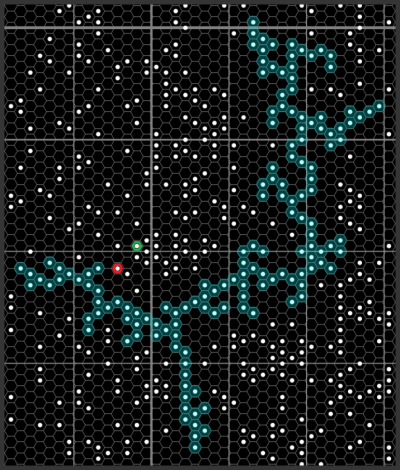
(Chart sourced from Traveller Map)
World Listings
Comprehensive Second Survey UWP data for all worlds lying within Astron Sector is available.
- The primary source material for all data is Traveller Map.
- Other sources may differ: some elements of the data may be contradictory or incorrect.
- Data is occasionally updated as new information becomes available.
- Scouting missions gathering reliable, verified data can receive substantial payment.
AAB library archives contain expanded data about the following systems:
Note that some Second Survey data, though only 40 years old, may already be out of date.
- Verified updated data is constantly sought.
History & Background (Dossier)
Astron Sector is a mostly unpopulated and largely undeveloped wilderness. Many worlds within the region have never had an intelligent being visit them.
Symbols: 1105
Three vertical, slightly offset orange circles are commonly used as a symbol to represent the sector.
- The imagery is based on the Three Sisters, a distinctive group of three orange giant stars lying within Fundibul Subsector.
- This symbol is used by the Haddox Association, a polity lying within the sector.
Not all species perceive color in the same way as humans: an alternative monochrome version, with black circles on a white background, may be used instead.
Native Sophonts: 1105
Nine sophont species are native to the sector:
- Non-Human Races
- Basachshe of Stane. Officious, contented, omnivorous semi-humanoids from a temperate world with an ancient culture.
- Ichachi of Vilian. Pale-furred, technologically primitive, angry, six-limbed scavengers with extreme religious views from a cold tundra world.
- Khiabodlam of Plutting. Egg-shaped jungle-dwelling tripod omnivores from a temperate agricultural world.
- Muu of Jileso. Large, fish-like, tentacle-headed aquatic predators with long streamlined bodies from a tropical water world.
- Nibammer of Gembolia. Industrious, efficient, subterranean herbivores with tough pill-shaped bodies from a cold tidally locked world.
- Pumiai of Surgian. Tall, leathery winged, lightly built semi-humanoid flyers from a hot arid world.
- Spatharo of Lenyfoqe. Strong, warlike, traditionalist, six-limbed reptilianiods from a tropical high gravity world.
- Tydere of Ratatta. Chitinous, multi-limbed, forest-dwelling carnivorous arthropods from a warm world rich with life.
- Yrogonomi of Stech Chets. Powerfully built, tribal, ursine-like omnivores with strong religious beliefs from a high gravity world.
Demographics: 1105
Significant populations of the following races (sophont species) reside within this area:
- Humaniti (Human Races, largely concentrated within the Haddox Association and on Ingo, but with small unrecorded populations throughout the sector)
- Haddox Association: 503.714 million, all Humans of mixed Solomani/Vilani/Zhodani heritage.
- Scattered Solomani / Vilani (of Imperial extraction): exact number unknown.
- Wuaye (likely descended from Terran explorers of the Long Night period): 200 million, probably only on one world.
- Zhodani: exact number unknown, mostly traders, explorers, and scouts operating in the coreward-trailing parts of the sector.
- Non-Human Races
- Basachshe: 70 million on one world.
- Chirpers: 120 million on one world.
- Ichachi: 300 million on one world.
- Jaibok: small numbers of raiders operating along the Korsumug Main.
- Jansa: small numbers of raiders operating along the Korsumug Main.
- Khiabodlam: 80 million on one world.
- Muu: 70 million on one world.
- Nibammer: 2 billion on one world.
- Pumiai: 280 million on one world.
- Spatharo: 20 million on one world.
- Tydere: 80 million on one world.
- Yrogonomi: 60 million on one world.
The known population of Astron Sector is approximately 3.784 billion.
- Approximately 54% of the sector's total population consist of Nibammer, a native minor Non-Human Race entirely located on Gembolia.
- Around 28% of the population consist of various less populous native minor Non-Human Races.
- The remaining 18% of the sector's population are human, including the Wuaye of Ingo and a few visitors from beyond the sector.
Linguistic Topography: 1105
The following languages are among the most commonly used within this astrographic region:
Toponyms: 1105
This sector has been known by different names to different groups over its existence including the following:
| Astron Sector Names | ||
|---|---|---|
| Culture | Toponym | Polity |
| Third Imperium | Astron | Third Imperium |
| Aslan | Astron | Aslan Hierate |
| Droyne | Oymeyok | Droyne Oytrip Yatroy |
| Hiver | Shiants | Hive Federation |
| K'kree | Shiants | Two Thousand Worlds |
| Solomani | Astron | Solomani Confederation |
| Vargr | Shiants | Vargr Extents |
| Vilani | Astron | Third Imperium |
| Zhodani | Shiants | Zhodani Consulate |
Historical Eras: 1105
The earliest activity in the sector seems to correspond to the Ancients era, between 300,000 and 250,000 years ago. During this time Chirpers were transplanted onto Surgian, the homeworld of the Pumiai, presumably by the Ancients. The reasons for this are not clear. No other evidence of Ancients activity is known to exist within the sector.
The Zhodani discovered jump drives in -5415 but there is no indication that they were ever active within Astron Sector. It seems likely, given Zhdant's relative proximity to the region, that at least a few Zhodani vessels did travel among its stars, but they have left no tangible traces. Even now Zhodani activity within the sector is minimal.
As far as is known, the next interstellar visitors to the region were humans of Terran extraction. These hardy souls had pushed up through the Vilani First Imperium, past the emergent Vargr and across the narrow corridor of stars bridging the Great Rift, and into the vast unexplored territories "Behind the Claw". By the -1900s they had crossed the sector and continued their journey to spinward: settlements and discoveries from the era are known in Mavuzog Sector. For the most part they left few traces behind them, although the Wuaye of Ingo are believed to be descended from the survivors of a crashed Terran ship dating to that time.
Eniri Hudson, a colorful human explorer of the era, is the first named individual associated with the sector. He has lent his name to the Hudson Expanse, a major astrographic feature within coreward part of the region. Hudson kept extensive notes and records of his travels that later provided valuable data for the Imperial First Survey.
This trickle of humanity slowed and then stopped during the Long Night.
In the Year 0 the Third Imperium was founded and over its first few centuries it expanded to spinward. From the 100s onward, small groups of Imperial humans began to move through the region, spreading their technology and use of jump drives. None of this new wave of humans appear to have settled within the sector: like their Terran predecessors they instead continued further to spinward.
From 300 to 420 the Imperial First Survey was conducted. Mostly, this drew together previously scattered survey data and created a basic portrait of the sector. Much of the data related to star positions and types rather than world UWPs and left many blank areas on the map.
The resurgent Korsumug Empire began large-scale raiding along the Korsumug Main during the 500s, including occasional forays into the Sector. Although there was little for them to ravage and despoil, the Jaibok are known to have taken captives from among the Ichachi, the Spatharo, and the Pumiai. The Empire continues raiding into the present day.
Estimates place the settlement of the worlds of the Haddox Cluster at sometime around the year 770. Similarly vague estimates places the founding of the Haddox Association to around the year 800. The settlement of worlds within the cluster appears to have ceased by around the year 1000, leaving relatively prime worlds such as Thuverhi as unpopulated wildernesses.
During the early 800s a reclusive religious group from the Spinward Marches with a few thousand adherents chose to depart the Imperium, citing "persecution" as its reason for leaving. The faithful assembled a small flotilla of starships carrying everything they felt they needed and set out to spinward. They disappeared travelling between Beyond Sector and the Vanguard Reaches. Although their fate remains officially unknown there are stories indicating that they ultimately settled a few worlds along the coreward edge of Astron sector. This group may be responsible for the "Obunemias Signal".
From 995 to 1065 the Imperial Second Survey was conducted. Astron Sector was included in this grand work and a much more detailed picture of the region was built up, though a great deal still remains unknown. Almost all of the data was gathered via remote observation and from careful collation of scattered records, though a few brave scout personnel operating out of Pautho in Theta Borealis Sector, undertook perilous long-range survey missions to fill in gaps in the information.
The Trooles Confederation, a relatively young state lying on the coreward edge of Theta Borealis Sector, came into being in order to counter increasing Jaibok aggression against its member worlds. Its navy patrols the coreward end of the Korsumug Main and a dedicated force – the Astron Frontier Patrol – dispatches flotillas to hunt down rogue Jaibok within Vilian Subsector and further beyond.
Major Historical Events Timeline: 1105
- ca -250,000: The Ancients were likely active within the sector.
- -5415: The Zhodani discover jump drive technology.
- ca -1900: The first known human explorers are active in the region (a few Terrans of the Rule of Man). They continue to spinward: the Wuaye of Ingo are believed to be their descendants.
- ca -1800: Eniri Hudson explores the Hudson Expanse region.
- -1776: The Long Night begins.
- Year 0: Far to trailing, across the Great Rift, the Third Imperium is founded.
- 100s-200s: A few pioneering Imperial explorers pass through the sector.
- 300-420: The Imperial First Survey charts the sector.
- 500s: Jaibok raiders of the resurgent Korsumug Empire become active on the Korsumug Main.
- ca 770: Estimated date for the initial settlement of Haddox and Sunset, in Haddox Subsector.
- ca 800: Estimated date for the founding of the Haddox Association.
- Early 800s: Religious refugees flee the Imperium, reputedly settling a few worlds along the coreward edge of the sector.
- 980s: The mysterious Obunemias Signal is transmitted.
- 995-1065: The Second Survey charts the sector.
- 1065: the Imperial Second Survey is published.
- 1080s-1100s: Armed clashes between Jaibok raiders and Trooles Confederation forces within Vilian Subsector.
- Early 1100s: the Obunemias Signal reaches the Spinward Marches.
Old Spacer's Tales
Old Spacer's Tales are rumors, tall tales, hearsay, and gossip that may be heard about Astron Sector.
- Often they are "friend of a friend" stories with little basis in reality, though some may contain a kernel of truth.
- Such rumors are usually heard far from the sector, within inhabited areas.
1. Terrible Disease.
The atmospheres (or surface materials) of many worlds in the sector supposedly harbor a virulent disease. It is a microorganism that can be inhaled or ingested (depending on the version of the story being told), and was spread from world to world by some long forgotten plague-bearer as they traversed the sector. It can survive extremely hostile conditions and lies dormant until awakened by the presence of a potential host. The disease is able to closely mimic the host organism's own biological composition and processes, making it almost impossible to treat. It causes the victim to erupt in unsightly sores and lesions and waste away, ultimately leading to death as a result of massive systemic organ failure. There is only one known cure.
- A particular plant, if properly refined, can provide a medicinal cure. It only grows on one particular (unnamed, of course) garden world and must be harvested at the correct time of the local year.
- Individuals exhibiting symptoms associated with the disease may trigger a panic in a population aware of the story.
- This persistent rumor may have helped discourage settlement within the sector.
2. Reclusive Communities
A dispersed religious group of Imperial origin inhabit distant parts of Astron sector. They fled persecution centuries ago and travelled far to spinward, or so the tales have it, and now live in isolated hidden communities along its coreward edge, among the rifts and voids of the Hudson Expanse. They are awaiting an event known as the Great Awakening.
- They are described as being heavily armed and very distrustful of strangers.
- The group appear to be the originators of the Obunemias Signal
Refugees have fled the Jaibok-infested sectors to rimward. Some may have made a fresh start within the pristine wildernesses of Astron sector.
- Such communities are likely to be largely self-sufficient.
- Refugees may lack important supplies or vital equipment.
- They may be reluctant to reveal their presence for fear of attracting the attention of the Jaibok.
3. Hudson's Horde
Eniri Hudson was a citizen of the Rule of Man who explored the coreward regions of the sector nearly three millennia ago, visiting many worlds and collecting the natural treasures and strange artifacts that he discovered. His vast trove of precious metals, rare gemstones, and valuable natural resources is said to be hidden on an unnamed world somewhere on the Outer Loop, the great ring of systems surrounding the Hudson Expanse.
- Cryptic clues to its precise location are supposedly hidden within Hudson's extensive journals and notes.
- The Hudson Papers are kept by the AAB as part of the historical Imperial First Survey archives.
- Optimistic treasure-hunters occasionally set off in search of the horde. They rarely return, and those that do are always empty-handed.
4. Swordies
Individuals are acting in an official but clandestine capacity, quietly gathering intel and scouring data archives in the ports and communities of the region. Their equipment is strange: odd designs not like the standard gear you get out this Far Along, and they use an unusual non-Riftian alphabet too. For certain they're Sword-Worlders! Sure, they'd pass as citizens of some other random minor polity to most folks but they have little telltales, specific habits and giveaways and turns of phrase that belie their true origins to those who know.
- The Swordies appear to be performing a privately sponsored astrographic survey somewhere within Astron Sector.
- They're a very long way from home.
5. Hidden Jaibok
Rumor has it that the Jaibok, or rather the Imperial Korsumug Navy under the guidance of Jansa intelligence officers, have established a secret base somewhere within Astron Sector. It is supposedly a repair and resupply facility for raiders just off of the Korsumug Main, an intelligence-gathering facility operated by Jansa agents and looking rimward, or a jumping off point for a massive invasion into the coreward edge of the Trooles Confederation.
- Higher than normal numbers of Korsumug Navy transport vessels have been operating on the coreward end of the Main.
- The Trooles Confederation navy is actively hunting for the supposed base.
- The government of Oujda, a world on the coreward edge of Theta Borealis Sector, is offering a huge bounty for the destruction of any such base.
6. Uncharted Anomaly.
Somewhere, deep within the sector, is a previously uncharted space-time anomaly. All the best versions of the story describe it as a "Jump Deep" region that warps jump physics and increases the amount of time that a vessel spends within jumpspace.
- It is said to dramatically increase the amount of fuel that the vessel uses during its jump.
- The stories have it that not all vessels exit jump safely. Those vessels that run out of fuel within its effect empty into a vast ship graveyard, containing dead vessels from many different regions and eras.
- How knowledge of the ship graveyard got back to inhabited worlds is not explained.
Worlds, Systems & Sectors (Political Astrography)
Note that this section relates to pre-Second Survey data and is awaiting an AAB Interal Records update.
A simple map showing areas of importance within the sector.
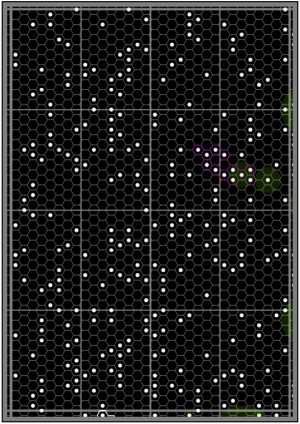
(Chart sourced from Traveller Map)
- Areas of brighter green indicate regions of greater political and economic importance.
Sector Summary: 1105
The Astron sector has 269 worlds with an estimated population of 3.084 billion, a per capita income of Cr7500, and a total economy of BCr23,000. There is 1 High Population World (Hi), 3 Low Population Worlds (Lo), and 251 Barren Worlds.
Driving the economy are 5 Agricultural Worlds (Ag), 2 Preagricultural Worlds (Pa), 4 Pre-high Population Worlds (Ph), 4 Preindustrial Worlds (Pi) worlds, 1 Pre-rich World (Pr), and 4 Rich World (Ri).
The average technology level is 4-5 (with most either at 0 or 1, or at 7 or more). The highest technology level is 10 at Jileso.
The Astron sector contains 400 individual stellar objects and multiple identified planets; these are grouped into 141 monostellar systems, 116 binary systems, 10 trinary systems, and 2 quaternary systems. The stellar objects consist of 9 class III giant stars, 9 class IV subgiant stars, 338 class V main sequence stars, 5 class VI subdwarf stars, 14 class D white dwarf stellar remnants, and 25 class BD brown dwarf objects. 222 of the 269 systems (82%) have native gas giants.
There are 7 Asteroid Belts (As), 34 Desert Worlds (De), 8 Fluid Worlds (Fl) 7 Garden Worlds (Ga), 31 Hell Worlds (He) 13 Ice Worlds (Ic), 1 Ocean World (Oc). 42 Poor Worlds (Po), 52 Satellite Worlds, 46 Twilight Zone Worlds, 23 Vacuum Worlds (Va), and 11 Water Worlds (Wa).
| 11 identified sophont populations in Astron Sector | |
|---|---|
Polities: 1105
Non-Aligned, Unclaimed Systems: 1105
The vast majority of the sector is made up of Non-aligned, Unclaimed systems.
- They are denoted by the Allegiance code NaXX
- There are 247 unclaimed systems, representing approximately 91.8% of the worlds in the sector.
Haddox Association Systems: 1105
The Haddox Association, lying within Vantor Subsector and Haddox Subsector, is the only extant polity within the sector.
- It uses the Allegiance code HaAs
- It occupies the worlds of the Haddox Cluster.
- Its prime world is Haddox.
- It governs 12 systems, representing approximately 4.4% of the worlds in the sector.
Non-Aligned, Sophont Dominated Systems: 1105
A few systems within the sector are controlled by native sophont species and are designated as Non-aligned, Sophont Dominated.
- They are denoted by the Allegiance code NaSo
- There are 9 sophont-dominated systems, representing approximately 3.4% of the worlds in the sector.
Non-Aligned, Human Dominated Systems: 1105
One system within the sector (Ingo) is designated as Non-aligned, Human Dominated.
- It is denoted by the Allegiance code NaHu
- It represents approximately 0.4% of the worlds in the sector.
Capital: 1105
- The closest approximation that the sector has to a capital is Haddox, the primary world of the Haddox Association.
Politics & Diplomacy (Interstellar Relations)
There are few political interests within Astron Sector. The Trooles Confederation sends naval vessels to patrol parts of its far rimward subsectors in order to eradicate rogue Jaibok. Occasionally Jaibok raiders of the Imperial Korsumug Navy slip inside its borders, intent on gaining glory, resources, and captives. A few hardy pioneers and settlers push out into the wilderness, keen to explore new worlds and exploit their natural treasures. Very rarely, Zhodani scouts or trade missions wander down from coreward, seeking to expand that states influence and make a handsome profit.
Military Forces: 1105
The Trooles Confederation, a polity of Theta Borealis Sector, sends its navy to patrol systems lying in the rimward parts of the sector.
- This force is known as the Astron Frontier Patrol.
Far-flung Jaibok raiders, elements of the Imperial Korsumug Navy, occasionally venture into the very rimward parts of the sector.
Trooles Confederation ships and Korsumug forces occasionally clash within Stane, Vilian, and Surgian subsectors.
Trooles Confederation Navy operations within the region.
Subsector Listing: 1105
An overview of the economic and political situation within each subsector:
| Name | Settlement & Economics | Politics | |
|---|---|---|---|
| Subsector A: | Yrgonomi Subsector | Primarily wilderness, isolated sophonts. | |
| Subsector B: | Ratatta Subsector | Primarily wilderness, isolated sophonts. | Rumors of Imperial human settlers. |
| Subsector C: | Obunemias Subsector | Deep wilderness. | Rumors of Imperial human settlers. |
| Subsector D | Gembolia Subsector | Primarily wilderness, isolated sophonts. | Occasional Zhodani traders. |
| Subsector E: | Klantor Subsector | Deep wilderness. | |
| Subsector F: | Plutting Subsector | Primarily wilderness, isolated sophonts. | |
| Subsector G: | Vantor Subsector | Lightly populated frontier, regular trade and commerce. | Partly under Haddox Association control. Occasional Zhodani traders. |
| Subsector H: | Haddox Subsector | Lightly populated frontier, regular trade and commerce. | Partly under Haddox Association control. Occasional Zhodani traders. |
| Subsector I: | Ingo Subsector | Primarily wilderness, isolated sophonts. | Remnants of the Wuaye civilization. |
| Subsector J: | Fiqorino Subsector | Deep wilderness. | |
| Subsector K: | Vyfura Subsector | Deep wilderness. | |
| Subsector L: | Blahonga Subsector | Deep wilderness. | |
| Subsector M: | Stane Subsector | Wilderness frontier, isolated sophonts. | Refugees, occasional wayward Jaibok raiders. |
| Subsector N: | Vilian Subsector | Wilderness frontier, isolated sophonts. | TCN Patrols, Jaibok raiders, refugees, pioneers and explorers. |
| Subsector O: | Surgian Subsector | Wilderness frontier, isolated sophonts. | TCN Patrols, refugees, pioneers and explorers. |
| Subsector P: | Fundibul Subsector | Wilderness frontier. | Occasional pioneers and explorers. |
References & Contributors (Sources)
- Classic Traveller, J. Andrew Keith, Marc Miller, John Harshman. Aslan (Game Designers Workshop, 1984), IBC. (Sector named but no further data)
- Classic Traveller, J. Andrew Keith, Marc Miller, John Harshman. Zhodani (Game Designers Workshop, 1985), IFC. (Sector named but no further data)
- Classic Traveller, Peter G. Celella, James Holden. Solomani & Aslan (Digest Group Publications, 1991), 50. (Sector dot map provided)
- GURPS: Traveller, Paul Drye, Hans Rancke-Madsen, Robert Prior. Sword Worlds (Steve Jackson Games, 2004), 75. (Armory Cluster).
- Author & contributor: Jo Grant of CORE (generated data) / Geir Lanesskog (refinement of data).
- Author & Contributor: Lord (Marquis) and Master Scout Emeritus Adie Alegoric Stewart of the IISS

